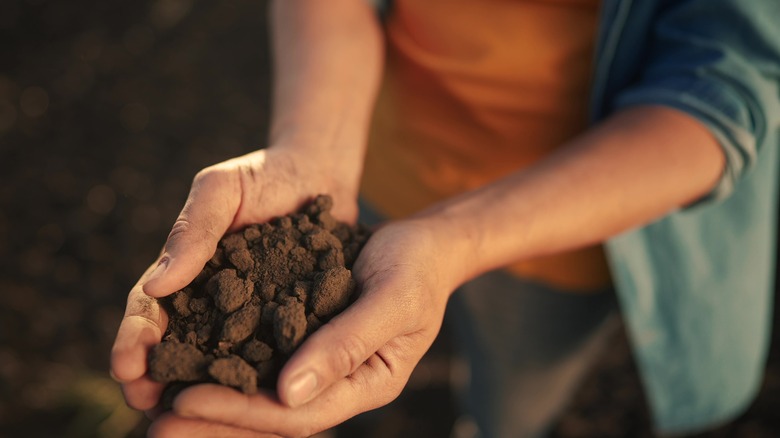The Simple Hack That Makes Sifting Lumpy Garden Dirt A Breeze
Lumpy dirt can be a bother in the garden for several reasons. Firstly, lumps in the soil can create uneven planting surfaces, making it difficult for seeds to establish proper root systems. This can lead to poor germination rates and stunted plant growth. Additionally, lumpy soil can hinder water absorption and drainage, causing water to pool in certain areas and leaving other areas dry. This uneven distribution of water can lead to inconsistent moisture levels, which can stress plants and make them more susceptible to diseases and pests. Furthermore, lumpy soil can impede the movement of air and nutrients through the soil, preventing roots from accessing the necessary resources for healthy growth.
Sifting lumpy dirt is important for better garden production because it helps create a finer and more uniform soil texture. By removing the larger lumps and debris, the soil becomes more loose and friable, allowing roots to penetrate easily and establish a strong foundation. This promotes better nutrient uptake, water absorption, and root development. That all being said, sifting or aerating soil can be a tiresome and arduous task if done with standard gardening tools. So rather than breaking your back sifting soil on all fours, consider using a milk crate to sift your dirt more easily. Using a milk crate to sift lumpy dirt not only saves time and effort but also helps create a finer and more uniform soil texture, which is essential for optimal plant growth. Try elevating your gardening with this simple hack!
How to use a milk crate to sift lumpy soil
Sifting lumpy dirt in a garden bed is a tedious and time-consuming chore, but with the help of a milk crate, it becomes a breeze. Start by placing the crate on a stable surface, such as a table or the ground. For finer soil, line the inside of the crate with a piece of hardware cloth or a mesh screen. This will prevent larger debris from passing through while allowing smaller particles to fall out. If you don't mind some clumpy soil, you can leave the milk crate as is.
Once the crate is prepared, simply scoop a shovelful of lumpy dirt into the crate. Use your hands or a gardening tool to shake and agitate the crate, allowing the smaller particles to sift through the bottom and into a container or directly onto the garden bed. If you've used a screen, the larger lumps and debris will remain on top of it, making it easy to discard them. Repeat this process until all the lumpy dirt has been sifted.
A milk crate is particularly useful for this task because of its sturdy construction and the evenly spaced holes on its sides. These holes allow for proper aeration and drainage, preventing the dirt from becoming compacted and ensuring a thorough sifting process. Additionally, the crate's size and shape make it easy to handle and maneuver, reducing strain on your back and arms.
